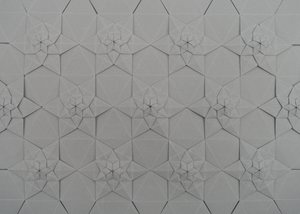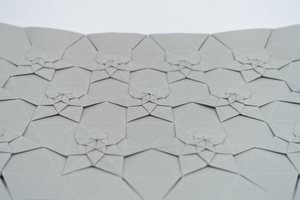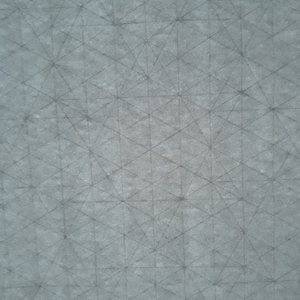Lucky Star Fractal Tessellation




This is a tessellation of the Lucky Star Fractal. The standalone star was designed independently by several people, starting with Shuzo Fujimoto. I don’t know if Fujimoto considered tesselating this design, but I wouldn’t be surprised if he did. Independently, Halina Rościszewska-Narloch (Haligami), designed her Day and Night Tessellation which is practically the same as this model folded up to stage one, though she also experimented with creating the fractalized version. You can find my fold of the non-fractal version of the tessellation under the name Lucky Star Tessellation.
In this model, I folded the Closed-Back Variant, so the back side looks the same regardless of how many levels of the fractal are folded on the front side. However, the triangular flaps could be opened in a flower-like fashion, in which case the number of concentric petal rings would depend on the fractal’s level (see Lucky Star Fractal (Open Back) for a single-molecule example).
Folding this model, I found out some interesting things about Tant paper, which I summarized in Notes on Tant Paper along with a few remarks about collapsing this model.
Comments